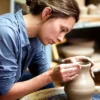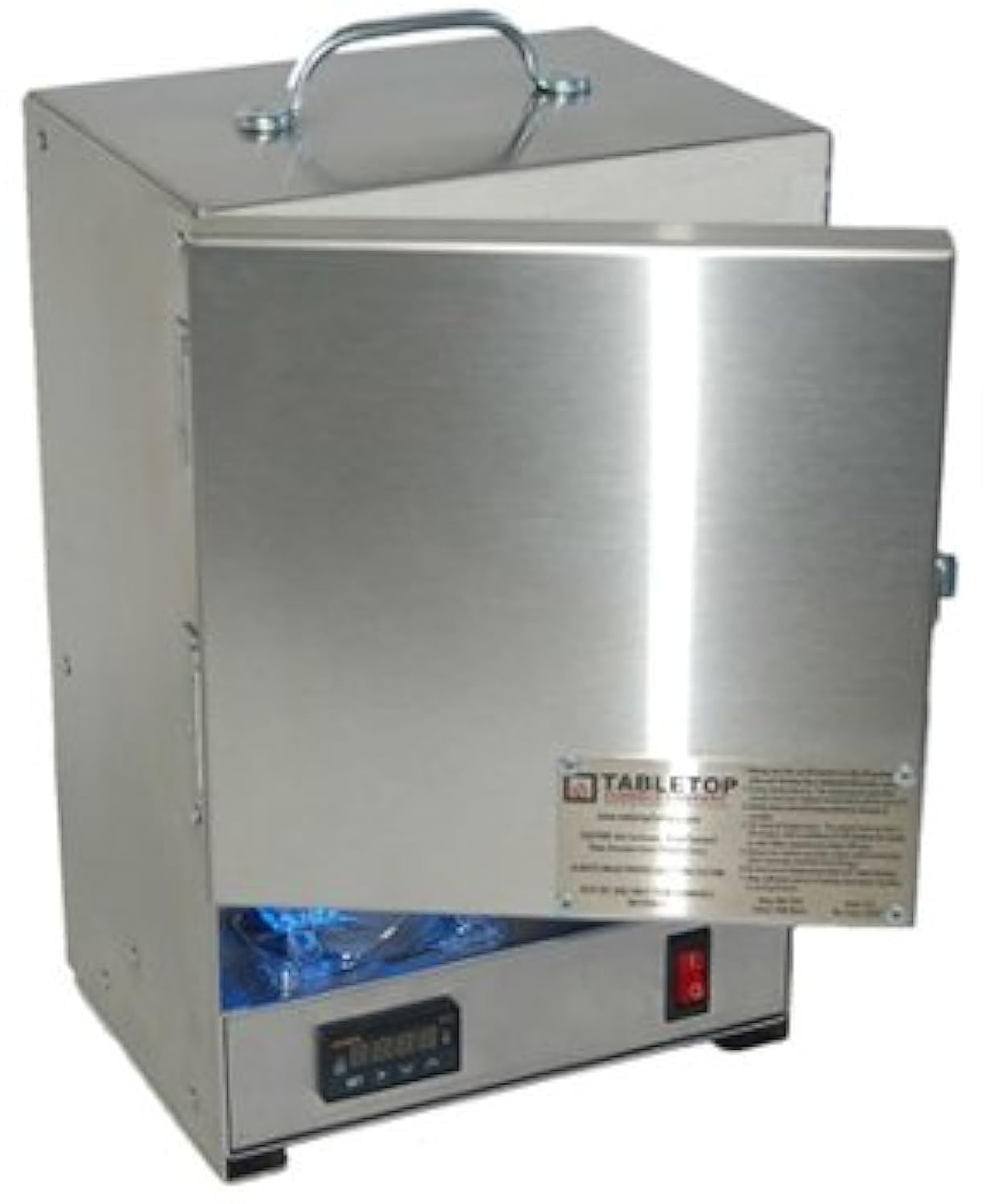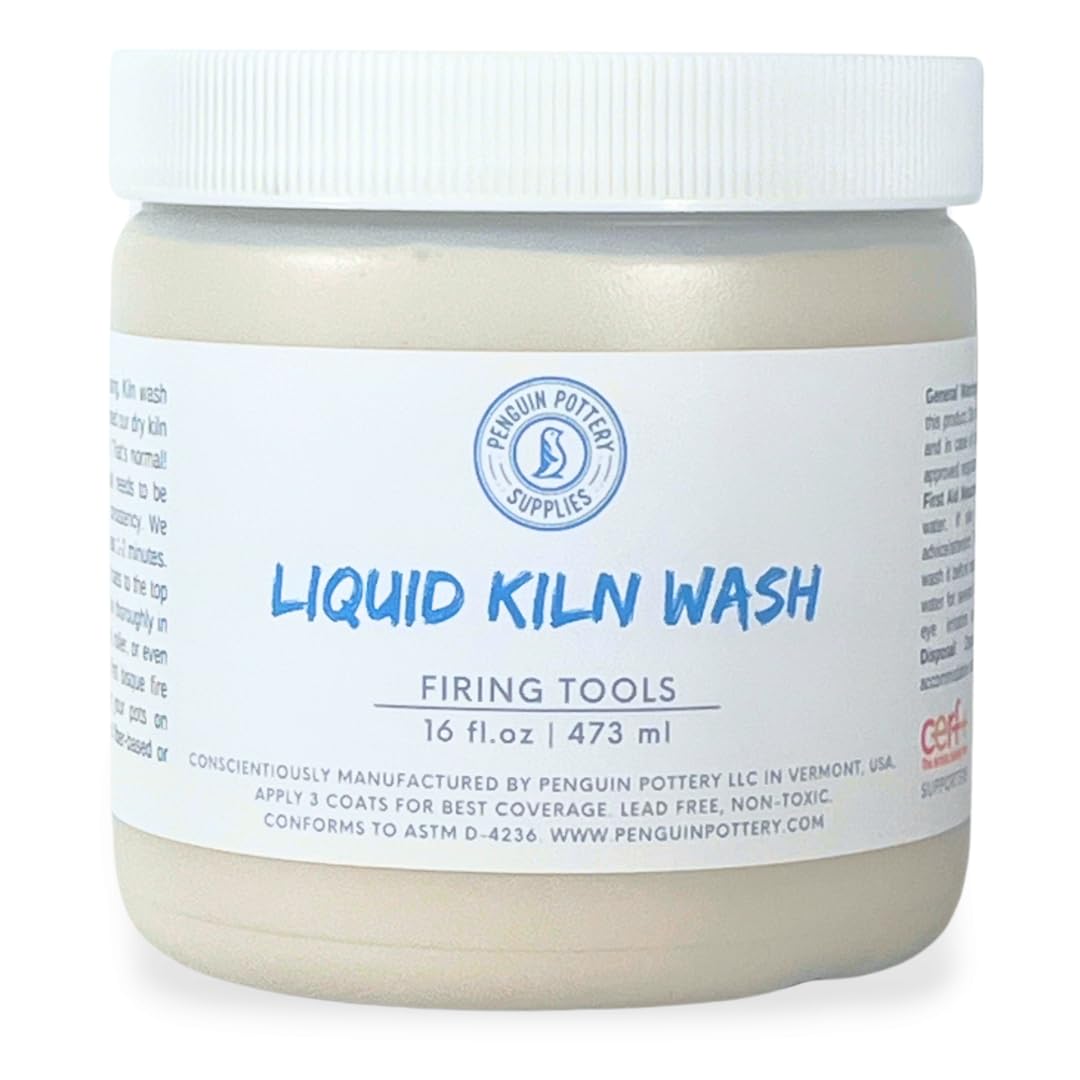Tabletop kilns are an essential tool for hobbyists and professional craft artisans alike.
These compact kilns offer the ability to fire ceramics, glass, and even metal clay at home without the need for a full-sized kiln.
The portability and ease of use make them a popular choice for those looking to expand their crafting skills or for small-scale production.
Beyond their versatility, tabletop kilns save space and often require only a standard electrical outlet, making them an accessible option for varying skill levels and needs.
When choosing a tabletop kiln, several factors should be considered to ensure the right fit for your projects.
The kiln’s maximum temperature is crucial, as it dictates the types of materials you can fire.
Additionally, the interior dimensions will determine the size of projects you can accommodate, so it’s important to match this with your anticipated work size.
The kiln’s power source and wattage are also worth considering, as they affect both operational costs and compatibility with your home setup.
We evaluated multiple tabletop kilns, examining each one’s performance, ease of use, and value for money.
Our goal was to identify the models that provide consistent results and are user-friendly for both beginners and experienced users alike.
Best Tabletop Kilns
We’ve explored the market to bring you the top tabletop kilns available today.
Our selection highlights kilns that excel in performance, durability, and ease of use.
Table Top RapidFire Kiln
This kiln is a smart choice for professional artists who need performance and portability on a budget.
- RapidHeat technology heats up quickly
- Compact and lightweight for easy transport
- Versatile use for multiple craft needs
- Not suitable for bisque firing
- Steel surface coloration changes over time
- Limited 90-day warranty
The Table Top RapidFire Kiln struck us with its impressive speed, reaching temperatures of up to 2200°F in about 8 to 10 minutes.
This makes it particularly useful for urgent projects, allowing artists to spend more time creating and less time waiting.
Using the kiln feels seamless thanks to its intuitive digital control panel, which offers precise temperature management.
Weighing only 12 pounds, this kiln is incredibly portable.
It’s perfect for artists who need to take their tools on the go without sacrificing performance.
Despite its small size, the firing chamber provides ample space for small batches of artwork, making it an efficient choice for jewelry making and glass fusing.
While the kiln excels in many areas, its suitability is not universal.
It’s not designed for bisque firing, which could limit its appeal for those focused on pottery.
We also noticed the steel surface undergoes tempering and coloration changes over time, though this does not affect overall functionality.
Although the kiln offers excellent features, the limited 90-day warranty is something to keep in mind.
PMC Tabletop HiTemp Electric Kiln
This kiln is a solid choice for our small-scale casting and burnout projects thanks to its reliability and convenient features.
- Heats up quickly to reach the desired temperature.
- Made in the U.S.A. with quality craftsmanship.
- Compact design perfect for limited workspace.
- Does not include a time controller.
- Limited size might not suit larger projects.
- Customer service response can be slow.
When we first used the PMC Tabletop HiTemp Electric Kiln, one thing that stood out was its quick heating capability.
It’s a real time-saver, allowing us to get going with our projects without much waiting.
This is ideal for efficiently managing small jewelry pieces.
The kiln’s compact size is both an advantage and a limitation.
On the plus side, it fits neatly into our workspace and is easy to handle.
However, it may not accommodate larger items if that’s what we’re aiming for, which is something to consider before purchasing.
Being made in the U.S.A. reassures us about the build quality.
Yet, it’s worth noting that contacting customer service might require some patience.
Despite this, the value and performance offered by this kiln make it a worthwhile investment for hobbyists like us.
1/2″ Kiln Posts – 4 Pack
These kiln posts prove to be a sturdy and reliable choice for elevating items within your kiln setups, perfect for both hobbyists and professionals alike.
- Durable material ensures longevity.
- Compact size fits easily into various kiln setups.
- Even and consistent elevation for projects.
- May be too small for some larger kilns.
- Requires precise placement for best results.
- Limited to basic functionality.
We found these kiln posts to be a practical and efficient addition to our kiln setup.
Their compact size allows for easy integration, making them suitable for a range of kiln configurations.
The reliability of these posts is impressive as they provide steady support for our glasswork projects.
The uniformity in size is beneficial when setting up multiple projects, maintaining an even elevation across the board.
However, their small stature might not be ideal for those looking to support very large items.
In our projects, they provided the level and uniformity we needed without any hassle.
While their basic functionality serves its purpose well, it’s essential to ensure proper alignment to achieve consistent results.
These kiln posts give a noteworthy performance, considering their simplicity and effectiveness in use.
6″ Kiln Post Set
For those who need reliable support inside their kiln, the 6″ Kiln Post Set offers stability and efficient heat distribution.
- Provides sturdy support within the kiln
- Allows for optimal ventilation and heating
- High-temperature tolerance for various projects
- Thinner than some available alternatives
- Limited width might pose balance issues
- May wobble if used with large weights
These kiln posts show excellent build quality, crafted to withstand temperatures up to 2380°F. We found them particularly beneficial in ensuring proper air circulation during firing.
Their construction not only elevates molds effectively but also aids in distributing heat evenly—a must-have for crafting precision.
One notable aspect of these posts is their slimness.
While this design works well for many of us, those handling heavier items might prefer a broader base for added stability.
It’s important to consider the weight and size of the items you plan to fire when choosing the right kiln posts.
Overall, if balance isn’t a concern, this set does a commendable job in providing strong support within our kilns.
The 6″ height is suitable for a variety of projects, making it a versatile addition to any potter’s toolkit.
Penguin Pottery Kiln Wash
This is a great choice for anyone looking to efficiently keep kiln shelves clean and free from glaze.
- Convenient and easy to apply
- Prevents pieces from sticking
- Fast drying time
- Requires multiple coats for effectiveness
- Not suitable for all shelf types
- Might need reapplication over time
The Penguin Pottery Kiln Wash is a handy solution for those wanting a stress-free firing experience.
The application process is straightforward, allowing us to use a brush, roller, or sprayer, making it flexible depending on what tools we have on hand.
Its protective layer effectively keeps our glazes from welding themselves to the kiln shelves, which saves us a lot of post-firing frustration.
Applying the Penguin Pottery Kiln Wash is quick, but it requires a few coats to ensure maximum protection.
It is essential to let each layer dry completely before applying the next to achieve the best results.
We’ve noticed that it dries fast, allowing us to get back to our projects without long waiting times.
Keep in mind, this product is not suitable for fiber-based or silicon carbide shelves, limiting its use to certain types of kilns.
Nevertheless, for the right material, this kiln wash is reliable and efficient, offering peace of mind during glaze firings.
Buying Guide
When selecting the best tabletop kiln, several factors should guide our decision.
The size and capacity of the kiln are crucial.
We must ensure the kiln fits our workspace and suits the type of projects we intend to work on.
Small kilns are typically more portable, making them ideal for limited spaces.
Temperature range is another key consideration.
We need to determine what materials we will primarily be using and choose a kiln that can reach the necessary temperatures for those materials.
A broader range offers flexibility for various projects.
The power supply is essential.
We should check the voltage requirements, as some kilns may need more power than regular household outlets provide.
Ensuring compatibility with our current electrical setup will avoid the need for costly adjustments.
Safety features are paramount.
Features such as automatic shut-off and sturdy construction are important for preventing accidents and ensuring long-term use.
We should prioritize kilns that have a reputation for reliability.
Control systems vary in complexity.
Basic models often have analog controls, while more advanced ones feature digital displays with programmable features.
Depending on our experience level and project requirements, we might prefer one over the other.
Here’s a quick comparison of features to look out for:
| Feature | Importance |
|---|---|
| Size/Capacity | Fits space and project needs |
| Temperature Range | Suitable for materials used |
| Power Supply | Compatibility with current setup |
| Safety Features | Includes automatic shut-off and sturdy build |
| Control System | Based on user experience and project complexity |
By considering these aspects, we can make an informed choice that best fits our needs.
Frequently Asked Questions
When looking for a tabletop kiln for home pottery, it’s crucial to consider features, brands, and kiln sizes.
We must also prioritize safety and energy efficiency during operation.
What features should I look for when choosing a kiln for home pottery use?
Key features include temperature range, control type, and size.
A kiln with programmable controls offers more flexibility.
It’s also beneficial to consider the materials the kiln is capable of firing.
Which brands are known for producing high-quality tabletop kilns?
Brands such as Skutt, Paragon, and Evenheat are well-regarded in the pottery community.
These manufacturers have a strong reputation for reliability and performance in their kilns.
What are the key differences between a beginner and professional pottery kiln?
Beginner kilns are often smaller and simpler, with fewer settings.
They are generally easier to operate.
Professional kilns offer more advanced controls and can achieve higher temperatures, suitable for a wide range of materials.
How do I determine the right size kiln for my pottery needs at home?
Consider the scale of your projects and space available.
Smaller kilns suit limited space and smaller pieces.
Larger kilns accommodate bigger works but require more power and space.
How can one ensure safety when operating a kiln in a residential setting?
Ensure proper ventilation and use a dedicated circuit to avoid electrical hazards.
Always monitor the kiln during operation and use a kiln sitter or similar safety device to prevent overheating.
What considerations should be taken into account for the energy efficiency of a pottery kiln?
Look for kilns with good insulation and energy-saving modes.
Energy-efficient models reduce operational costs over time.
Proper loading techniques can also help maximize efficiency.







